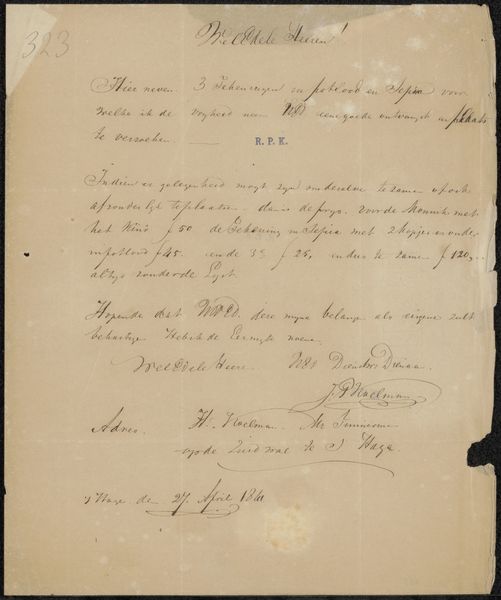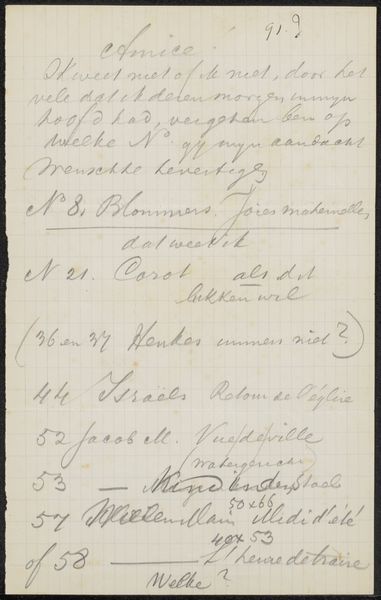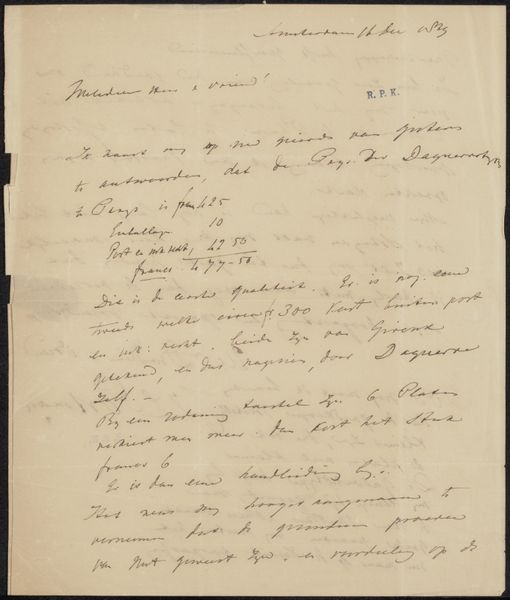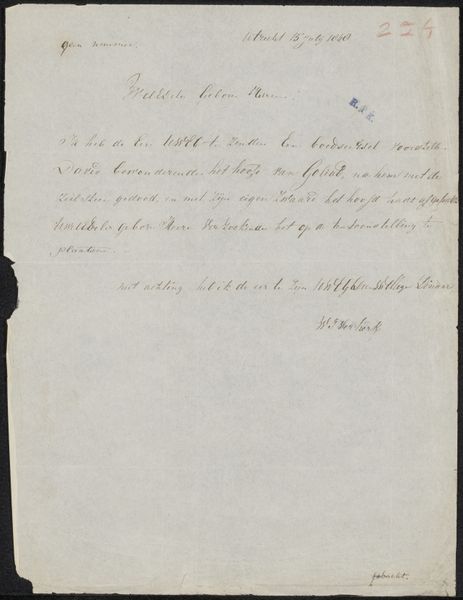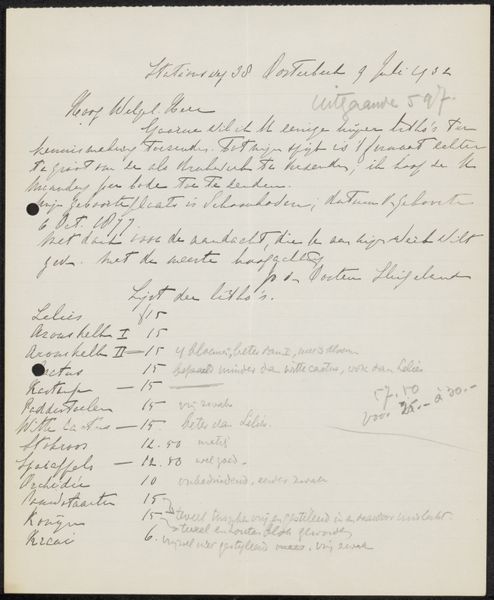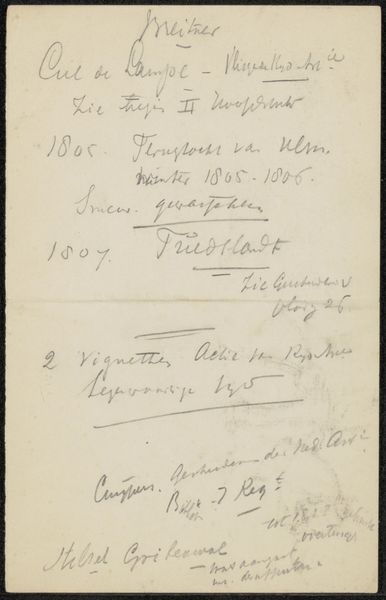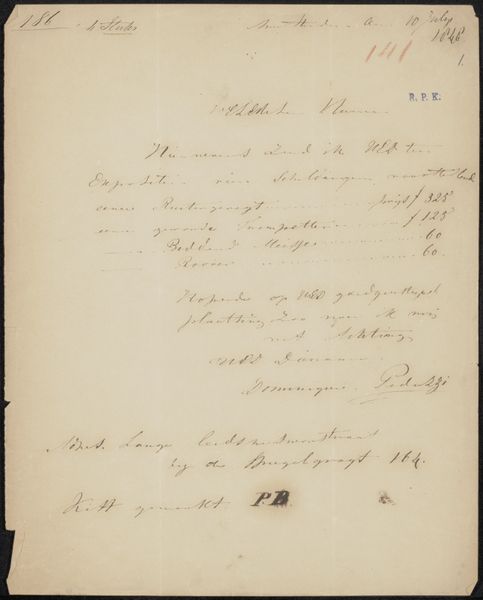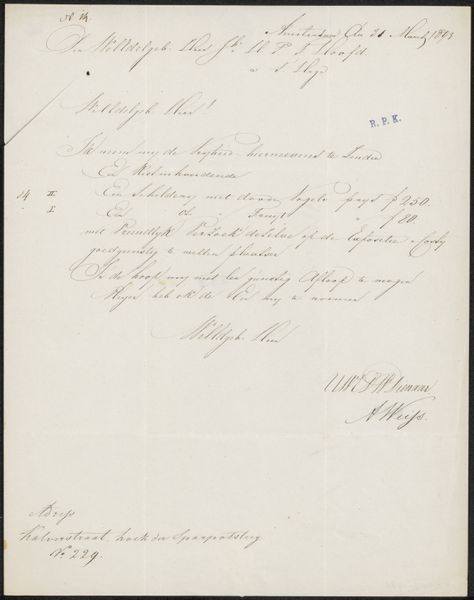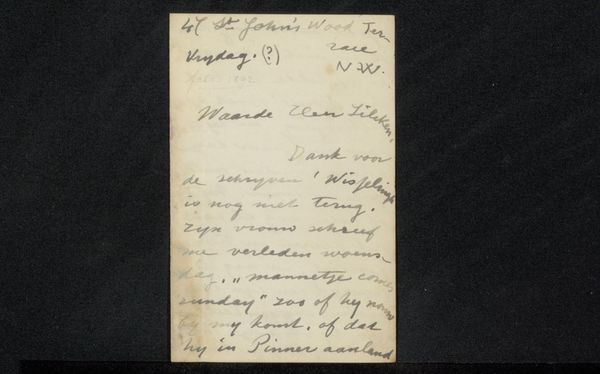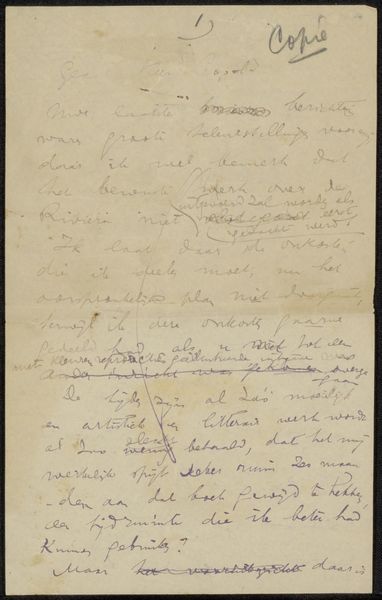
drawing, paper, ink, pencil
#
drawing
#
dutch-golden-age
#
paper
#
ink
#
pencil
Copyright: Rijks Museum: Open Domain
Curator: Take a moment to look at this piece entitled "Brief aan Frans Buffa en Zonen," which translates to "Letter to Frans Buffa and Sons." It's attributed to Herman Frederik Carel ten Kate, possibly from 1868. What are your initial thoughts? Editor: The aged paper immediately sets a contemplative mood. It seems almost like peering into someone's private thoughts, captured with such delicate pencil work and fading ink. Curator: Indeed, the materiality of the artwork provides crucial information. It is a drawing executed with ink and pencil on paper, elements commonly employed for quick notation. Editor: Considering the business relationship hinted at by the title, do we know much about the means used to distribute or eventually publish these letters by Buffa en Zonen? Curator: Ten Kate’s career reflects this blending of high art with everyday necessities. His process, quickly writing the business's financial expectations on this parchment using cheap ink and pencil reflects that, where paper became less a canvas and more a mere vessel for work. Editor: The writing itself appears as though a formal, perhaps professional tone struggles with a hurried attempt to accurately communicate price negotiation details; look, for instance, how quickly 'Blundering' is scribbled. Does that suggest pressure on the labor conditions required to deliver his works? Curator: It suggests a constant interplay, a tension inherent to creative industries. Even the act of writing out orders had become an intersection of financial exchange. What strikes you most about this letter in terms of its design and the visual structure? Editor: The haphazard, non-linear placement of the words seems very expressive. Also, even in just the fragments of the letters, they suggest urgency; observe how certain price listings sit next to abrupt changes in script style! It draws the eye in unexpected ways, and makes an artifact which originally had such a simple purpose feel artistic by itself. Curator: In this sense, it challenges conventional art historical hierarchies, where paintings would typically have higher perceived artistic importance relative to preparatory documents like letters. The materials themselves take on an independent visual value due to their utility. Editor: Absolutely! Viewing such work requires us to reassess value by recognizing the means which contribute to how we relate to its use, rather than inherent formal quality itself. Curator: By delving into the social context and considering the artwork as a form of document, we are able to reveal intricate meanings far beyond its face value, bringing to light the often unseen or unacknowledged efforts woven into every tangible product. Editor: Examining those means can expose hidden connections among people, labor, commerce—making a seemingly simple correspondence become significant.
Comments
No comments
Be the first to comment and join the conversation on the ultimate creative platform.
